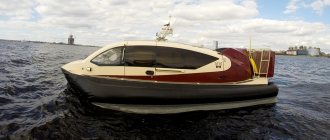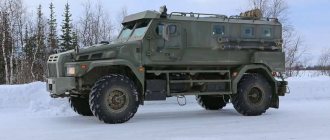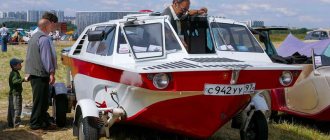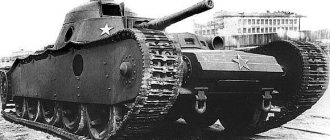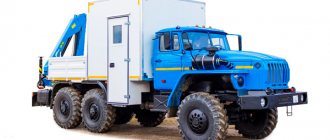The existing vast spaces, covered with deep snow cover for many winter months, and the inability to quickly travel by vehicle on snow-covered roads, gave designers the idea of creating a special high-speed winter transport back in the last century.
Through trial and error, models of sleds with a motor were created and in the end the designers achieved positive results, after which the modeling of snowmobiles of various designs began to develop and does not stop to this day.
History of creation
Designers created many models of snowmobiles, which during tests showed unsuitability for movement on snow, and defects in operation were discovered. However, failures did not discourage the desire to further improve the snowmobile.
The failed models were redesigned and tested every time, year after year, until reliable designs appeared. The pioneers of aerosleigh business include:
- Yu. A. Meller.
- A. S. Kuzina.
- A. Ya. Dokuchaeva.
- I. I. Sikorsky.
The first snowmobiles were the simplest in appearance. In 1911, newspapers were full of news about the first tests of Yu. A. Meller's snowmobiles. And the next year, 1912, A.S. Kuzin was the first to install an aircraft engine on a car. The beginning of the imperialist war in 1914 caused the development of all types of transport, including snowmobiles, which found their use at the front.
In 1915, the All-Russian Zemstvo Union was engaged in the construction of snowmobiles, but there were very few of them, since aircraft engines were used for fighter aircraft.
But the front really needed combat snowmobiles. In the same year, Professor N.R. Briling and engineer A.S. Kuzin supervised the construction of more than twenty machines that the front used for its needs.
Although from a modern point of view the designs of snowmobiles seem very primitive, they did their job. Even the German General Hindenburg successfully used snowmobiles for communication services in his army. He knew firsthand about poorly developed roads and long winters in Russia.
During the Civil War, interest in these designs did not disappear; in 1919, a commission was created to organize the construction of snowmobiles, and it was given the task of developing models suitable for military purposes.
Further construction of snowmobiles was already gaining momentum in the USSR:
- 1920 - production of the first 9 Beka snowmobiles, which were powered by Hol-Scott water-cooled engines with a power of 125 hp. With.;
- 1921 - models of various designs appear, “NRB”-Brilling, “ANT”-Tupolev, “KAS”-Kuzin, “Tri-Ka”-engineers Karelsky, Klimov, Christie, “Arbes”-Arkhangelsky, Briling, Stechkin;
- 1922 – first test runs Moscow-Sergiev Posad-Moscow;
- 1923 - the first all-metal snowmobile (ANT-III) designed by Tupolev is produced;
- 1928 – design by A. N. Tupolev with a 100 hp “Lucifer” engine. p., was demonstrated at the International Aviation Show in Berlin where it received many positive reviews, which was written about in foreign newspapers;
- 1930 – regular operation of snowmobiles on the first snowmobile line opened between Kanash and Cheboksary. Its length was 85 km one way;
- 1930 - Soviet aircraft designer and inventor P.I. Grokhovsky developed an armored model of a combat snowmobile on three skis with a propeller-mounted engine in an armored casing. Unfortunately, the project remained unclaimed.
- 1933 - the OSGA-2 vehicle takes part in the Arctic voyage of the icebreaker "Krasin";
- 1934 - release of new snowmobiles not with an aircraft engine, but with a GAZ automobile engine;
- 1935 - lines were organized in the Far North, Kamchatka, where the machines were operated.
It is now difficult to imagine delivery to remote points cut off in winter without the help of snowmobiles.
It seems that they have always been there, although Soviet snowmobiles (they can be considered mass-produced) appeared no more than a hundred years ago.
Landplane racing
By the end of the first decade of the 20th century, more than a dozen different designs of snowmobiles were rushing along the snowy Russian roads, and a natural desire arose to compete. Since 1911, pilots of cars with propellers began to participate in various races and competitions. It is curious that the chairman of the jury of such events was the “father of Russian aviation” Nikolai Egorovich Zhukovsky. All his life, Zhukovsky - by the way, Nezhdanovsky’s university classmate, and then his future leader - was very interested in snowmobiles and himself participated in the development of some designs.
1941. Combat snowmobile NKL-26 This device was designed at the very beginning of the war and was delivered to the Russian army at the end of 1941 - beginning of 1942. The snowmobile was designed for two people - the vehicle commander, who served as a gunner in combat operations, and the driver. The wooden hull was protected by an armor shield at the front and had a hatch for the gunner. The machine was powered by a 120-horsepower M-11G aircraft engine and had excellent maneuverability: the front and rear skis of the snowmobile simultaneously turned (in different directions).
In 1912, snowmobiles went into wide production. By order of the War Ministry, they began to be produced at the Russian-Baltic Carriage Plant in Riga. However, the “homeland of snowmobiles” turned out to be unprepared for the First World War, while German engineers developed more than ten models of snowmobiles for various applications specifically for the army, so that the Germans felt more confident in the snowy expanses than the Russians. But over time, suitable snowmobiles appeared in the Russian army. Most snowmobiles were ambulances, some were equipped with machine guns. But they were used infrequently for military purposes.
1960. Snowmobile “Sever” They were developed by the Kamov Design Bureau on the basis of the “Victory”, but also used rear ski struts from the Ka-15 helicopter, louvers of the engine cooling system from the Yak-12 aircraft and some other aircraft units. Equipped with an AI-14P aircraft engine with a power of 260 hp. A notable feature of the snowmobile was the use of a “reversible” propeller with rotating blades. With its help it was possible to brake and even move in reverse.
Snowmobile service in wartime
For military purposes, for the first time, cars began to be used in 1915 as transport of movement or to maintain communications between military units. In 1939-1940, the Red Army had aerosled battalions, which were used in combat sorties in the war with the White Finns. Their task was also:
- in the evacuation of soldiers wounded in battle;
- supply of fuel and food;
- supply of ammunition.
Following the combat snowmobiles were landing groups with skiers, who destroyed units in the rear, fortified points, and carts with provisions and ammunition of the enemy.
A special peak in the use of snowmobiles occurred in the winter of 1942-43 during the Great Patriotic War.
They were used in large numbers as combat units; machine guns were installed on them and they were used for combat missions.
Positive performance of machines in open spaces was noted. The snowmobiles were part of the following units:
- combat airborne battalion (BABS). With their help, reconnaissance was carried out and the open sides of combined arms, tank units, command posts were guarded, and the coast was patrolled. Together with ski and rifle units, retreating opponents were pursued. Provided communications between army units;
- transport aerosled battalion (TABS). We transported military detachments and wounded soldiers. Provided delivery of cargo and ammunition.
We were engaged in towing and transporting machine guns, mortars, and anti-tank guns to firing positions. They put up smoke screens.
Rokossovsky himself mentioned in his book the irreplaceable role of snowmobile units in this brutal war.
They wrote: “We asked V.D. Sokolovsky to send an aerosled company located at the army rear headquarters. Somehow, at the end of February, a German ski detachment of two hundred people penetrated our rear and blocked the road that supplied the right flank of the army with everything necessary.
The Airborne Company was used to attack the German paratroopers, and they performed their role brilliantly.” During the combat operations near Stalingrad, airborne battalions delivered military supplies and food to the advancing units of the Red Army.
Use during peacetime
The Design Bureau of N.I. Kamov developed the Sever2 snowmobile in 1959; serial production included one hundred models. In 1962, he launched a series of improved Ka-30 snowmobiles. In 1966, the Dalmashzavod enterprise produced up to 30 models per year.
This model could accommodate 8-10 passengers.
Intended for regular transportation of people, cargo, doctors to inaccessible areas, such as:
- Siberia;
- Far North;
- Far East;
- Kazakhstan.
Snowmobile work was often carried out in difficult weather conditions, with frost below 40 degrees, on snow and ice hummocks.
Over the course of a year, the vehicle covered up to 15 thousand km. In the summer, the car was equipped with floats and used to move along rivers as gliders. Removed from service in 1980 due to wear and tear.
Amphibious snowmobile A-3
Amphibious snowmobile boat A-3 designed in 1961 by Soviet inventors under the control of G.V. Makhotkin. The first model was tested in 1962. Serial production of the machines began in 1964. This model was demonstrated at VDNKh in 1965 and was duly awarded.
The Tupolev Design Bureau was awarded a 1st degree diploma, those who led the project were awarded a gold medal, Makhotkin, a silver medal, Vorobyov, Merkulov, Zhevakin - bronze medals.
The A-3 amphibious snowmobile was demonstrated in Finland, Sweden, Italy, Iraq, Chile, Canada, Brazil, Kuwait, and in socialist countries, and was exported to many countries.
Where other equipment will not pass during spring and autumn floods. Amphibians were widely used:
- for delivering mail and medical workers to not very accessible villages;
- carrying out rescue operations;
- border troops of the Soviet Army.
The amphibian also participated in the search and rescue service of the cosmonaut detachment. There was an interesting fact concerning the General Secretary of the Central Committee L.I. Brezhnev when he saw the amphibious snowmobile A-3. Since he loved hunting and fishing, he asked to create a similar car for himself, but smaller in size. Soon they prepared a design for an amphibian whose mass was 400 kg, length 4.5 m, width 1.8 m.
The model was a four-seater, with a 35 hp engine. With. The car developed a speed of 40...50 km/h across the snow and water. This model was made in triplicate, two units were transferred to the Zavidovo hunting reserve, the third was used for experiments in Dubna. The A-3 amphibious snowmobile was operated until the end of the eighties. But some models can still be seen today.
Aluminum instead of wood
Andrei Nikolaevich Tupolev put his first propeller on a snowmobile. Since 1919, as a designer of the Commission for the Construction of Snowmobiles (abbreviated as KOMPAS), he, together with other talented designers, developed the first Soviet snowmobiles. Over the course of several years, more than a dozen original designs were created, but this organization did not last long. The head of KOMPAS, Nikolai Romanovich Brilling, and his deputy, Tupolev, had too different ideas about what the snowmobiles of the future should be like. In particular, they could not reach agreement on the most fundamental issue - whether to make the sled body wooden or aluminum. As a result, the KOMPAS team split into two schools - “aviation” and “automotive”.
1964. Amphibian A-3 Powered by an air-cooled aircraft engine M-14B with a power of 350 hp. Relatively small dimensions (6110x2160x2205 mm) and weight (2100 kg) made it possible to transport the amphibian in the back of a truck, cargo cabins of airplanes and helicopters, as well as on the external sling of helicopters. It could transport 500 kg of cargo on water and 650 kg on snow at speeds of up to 80 km/h and 100 km/h, respectively. Also, the snowmobile could comfortably carry two, and if necessary, up to six passengers.
Brilling's team continued to make sleds from wood at NAMI, and Tupolev and his supporters within the walls of TsAGI began to produce the world's first all-metal sled ANT-3 from domestic duralumin. A year after the construction of the snowmobile, Tupolev took into the air the first Russian all-metal aircraft, the ANT-2. Winged metal did not disappoint, and all subsequent snowmobiles and Tupolev aircraft are also made all-metal! But as the volume of orders for aircraft increased greatly, in the 1930s the Tupolev Design Bureau gradually moved away from designing snowmobiles.
1970s Brezhnev's amphibian At the request of Leonid Ilyich Brezhnev, who liked the A-3 amphibian, snowmobiles of smaller dimensions (length - 4.5 m, width - 1.8 m) and weight (only 400 kg) were designed. The four-seater vehicle was driven by an engine with a power of only 35 hp, but was capable of accelerating in the snow to 40-50 km/h. Three such vehicles were built - two of them were transferred to the Zavidovo State Hunting Reserve, and the third was used at the base in Dubna for test purposes.
Nevertheless, the 1930s–1940s became the heyday of snowmobiles: they were used in the development of the northern regions and in combat operations of World War II. In the late 1950s, the Kamov Design Bureau developed the Sever snowmobile based on the Pobeda automobile body, which was later replaced by the Ka-30, a 260-horsepower RAF minibus with a propeller. But by this time, many already perceived snowmobiles as a relic of the past. Canadian Joseph-Armand Bombardier had already been producing his snowmobile for a couple of decades, which was cheaper, more economical and superior to snowmobiles in all respects. Snowmobiles promised to repeat the fate of gyroplanes, which also had enormous popularity in the 1930s and 1940s, but were then universally replaced by helicopters. Thanks to Igor Bensen, gyroplanes were born for the second time: Bensen built an incredibly cheap device that became popular among poor American aviation enthusiasts. And the history of snowmobiles has its own hero - Gleb Vasilyevich Makhotkin. The snowmobiles of his design did not become cheaper, but now they went where no snowmobile could go. Makhotkin made a full-fledged amphibian out of a snowmobile.
Beginning XXI century Amphibian AS-2 Equipped with a ZMZ automobile gasoline engine with a power of 150 hp. with high efficiency. Due to its low weight (1500 kg) and dimensions (5600x2200x2300 mm), it reaches speeds of up to 90 km/h on snow and 50 km/h on water. However, the motor is not designed for long-term operation at high speeds. The amphibian carries 300 kg of cargo or 3 passengers. “Automotive” controls and units simplify operation and repair, and the use of suspension increases the service life. The design of the amphibious snowmobile AS-2 widely uses familiar automotive components and controls, in particular the engine, steering wheel, pedals, windshield wipers and rear-view mirrors.
Snowmobile "Amphibian Patrol"
This is a unique and universal means of transportation across snowy expanses, hills, hummocks, swamps, and rivers, for which there are no barriers. And most importantly, these snowmobiles can be bought because they are currently being produced.
Frame
Almost weightless and durable fiberglass, used in aviation, is used for the cladding.
He is not afraid of rusting and freezing. Contains internal and external partitions, an air gap between them. This makes you feel comfortable in the cabin. The skin has high strength and is protected by reinforcement bars.
Propeller system
A fiberglass aircraft propeller is used, which is strong and durable. The leading edge of the blade has a protective metal edge for long lasting functionality. Each machine has its own propeller.
Bottom protection
The bottom of the Patrol is protected by a special material made using special technology.
The soft protective adaptive bottom includes two layers.
High molecular weight polyethylene is used to make protective bottom plates. This material impresses with its properties:
- The friction coefficient is close to zero.
- High wear resistance.
- Durability at the highest level.
Depreciation occurs due to 10 low-pressure air cylinders. They dampen the inevitable shocks received, as well as vibration when driving. Air supply to the cylinders is automatic.
This bottom design reliably protects the body from all shocks.
Engine
These snowmobiles are equipped with several types of engines that are manufactured in Japan. Reliable operation of motors has been tested by time:
- Subaru EZ-30 – 210 l/s;
- Subaru EZ-36 – 256 l/s;
- Toyota3UZ – 290 l/s.
Snowmobile "Patrol" will cost depending on the selected engines. If the design is used at temperatures below 25-30 degrees, then a Webacto pre-heater should be installed. With its help, the engine will start smoothly, which will prolong its operation.
It reaches speeds on water surfaces of up to 55 km/h, on ice – 130 km/h, on flat surfaces – 150 km/h.
Control
Almost car controls, familiar gas pedal, steering wheel, instruments. The good maneuverability of the design is amazing; they can easily make 360-degree turns almost on the spot.
Salon
Driving the Patrol, a person finds himself in a comfortable, warm, cozy cabin, just like in a car. The cabin can accommodate from 2 to 6 seats equipped with pneumatic shock absorption. The snowmobile is glazed from unbreakable polycarbonate.
The advantages of snowmobiles include: simplicity of design, modern appearance, high reliability, comfort, the ability to develop speed and accommodate six people. For people who love hunting and fishing in the company of friends, this snowmobile model will be very useful.
Models in stock
Snowmobile "Patrol" is a universal transport for difficult terrain. The choice of snowmobile model depends on operating conditions. Taking into account the customer’s wishes, we select protective or service coloring, engine power, interior space and load capacity.
Cabin capacity. We produce snowmobiles with a capacity of up to 8 people. It is convenient to go hunting in such a vehicle with a large group: the spacious interior can accommodate passengers and equipment. You can spend the night in the amphibian cabin in summer and winter - we have equipped the cabin with comfortable heating.
The carrying capacity of the amphibian depends on the chosen model. To deliver specialists and equipment to hard-to-reach areas, you need not only increased cross-country ability, but also good carrying capacity: snowmobiles can carry up to 800 kg.
Engine power. We equip snowmobiles with adapted Japanese engines. The choice depends on the size and carrying capacity of the vehicle: for example, on the AC-6 model we install Toyota engines with a power of 290 horsepower. We equip AC-5.2 amphibians with a Subaru engine with a power of up to 256 hp. With. We install a Rotex aircraft engine on a fast and maneuverable aerocycle.
Speed and agility. Thanks to powerful engines, the amphibian accelerates up to 80 km/h in water and can move against the current. Environmental organizations use “Patrols” to protect the territory from poachers: on the ice, snowmobiles reach a speed of 150 km/h - violators will not have time to escape. In addition to high speed, amphibians are distinguished by maneuverability - they can easily turn 360º on the spot.
Order and delivery. We make the Patrol snowmobile to order within 30 days: you can choose the configuration, additional equipment and color. We produce the most popular models in advance. If you like the amphibian model and it is in stock, you can buy it right away. You can pick up the snowmobile yourself or choose a convenient delivery method: by truck or by train in a container.
To control an amphibian you do not need to have any special skills: the process of getting used to it takes 1 hour. We install intuitive equipment: a familiar car steering wheel, car instruments and gas pedal.
If you have any questions or are unsure which modification you need, please call. We will note your wishes and help you choose the appropriate snowmobile model. You can also sign up for a test drive and fully experience the speed, maneuverability and maneuverability of amphibians.
Other models
Light snowmobiles under the modest name “Malysh” are gaining more and more popularity. And they use modern materials and technologies.
Baby snowmobiles are named so not because they are only capable of transporting children, they are capable of moving an adult, and by the way they are not that expensive, the name is simple because of its modest dimensions.
The engine from the motorcycle copes well with the tasks assigned to the sled.
Drawings and descriptions of the design are freely available on the Internet, and thank God in Russia there are still many Kulibins capable of making a worthwhile thing out of nothing. Homemade snowmobiles are proof of this.
